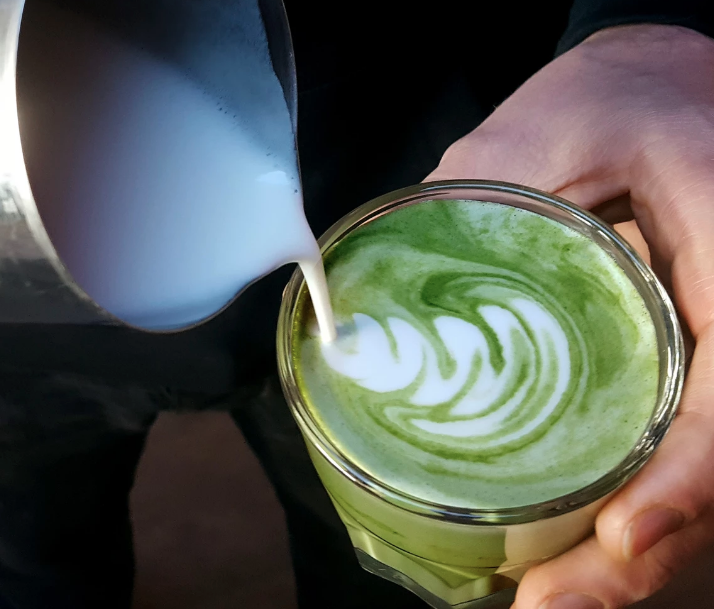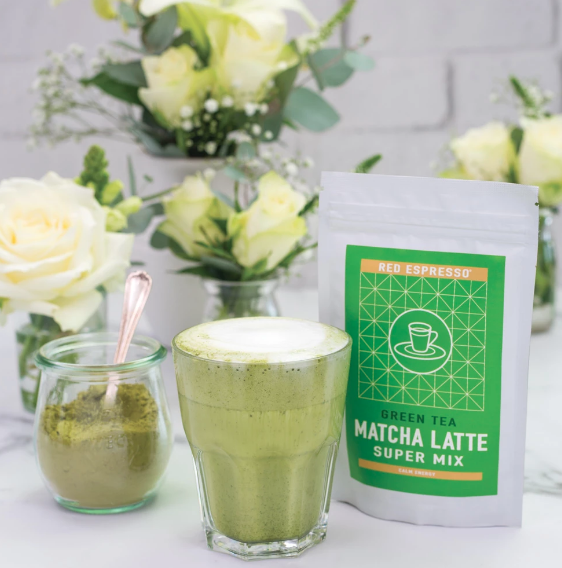Words by Nic Reid, all images red espresso
I first tried matcha in Minneapolis in 2008. I was at the SCAA exhibition and a Japanese matcha company had a large stand with all the bells and whistles. It was their attempt to break matcha into the US café market and they were pretty busy considering they were promoting tea at a coffee show

Matcha is essentially what we know as green tea but the fundamental difference is the leaves are carefully ground to a fine talc-like powder and consumed in your drink rather than brewed as loose leaf tea or in tea bags. There are other differences too, that go into the very nature of how delicate and special matcha is in Japanese culture. Matcha is almost entirely shade grown – the sun is blocked out to slow or halt photosynthesis which has adverse affects on taste. the leaves are hand-picked very young and then deveined and destemmed to remove anything that might affect the consistency of the powder. Even the way matcha is ground is special. Traditional grinding stones are cut out of granite slabs and the grooves and channels hand-carved by expert stone masons. They etch out unique tread patterns that channel and grind the green tea into very fine powder of between 5 and 10 microns. To put this in perspective, a human hair is 75 microns.
As a general guideline, high quality matcha is a vivid emerald-green colour, has an umami-sweet taste and there is very little astringency (what we know as light acidity or bitterness).
Lower grades are more yellow-green, noticeably bitter or more grainy in texture – made from the left over bits of the leaves or from less desirable leaves
Matcha has exploded over the last 10 years and can now be found on most progressive café menus. This can seem quite surprising as most people trying matcha for the first time aren’t convinced by the taste, myself included. I had to try it a few times before I “got it”. I liken it to my experience with sushi. I didn’t get what the fuss was about when I first tried it but after a few tries I was soon a convert, an expert in chop sticks and even getting sushi cravings. Still it seems matcha is a Love it or hate it thing
Matcha is used in everything from ice cream to matcha lattes. It pairs very well with vanilla and white chocolate so its often found in desserts and other sweet things. One of Nestle’s most popular KitKat flavours is Matcha. Its also a natural food colouring - if you’ve ever seen green burger buns or green croissants at your local bakery chances are they used matcha to colour them.

Matcha has a lot of health benefits going for it too. It has a high concentration of a particular antioxidant called EGCG (epigallocatechin gallate) which is believed to be have cancer fighting properties, prevent heart disease and even type-2 diabetes. This may all sound amazing but what has really caught the Western world’s attention is its apparent link to weight loss. EGCG can be found in all sorts of diet aids and fat burners and often seen on labels as “green tea extract”. Not bad at all if you already drinking matcha!
A lesser known benefit of matcha is the caffeine buzz you can get – but don’t expect a coffee buzz. Often referred to as Calm Energy or Focussed Energy, matcha offers a more relaxed take on a caffeine rush. Matcha does contain caffeine but what sets it apart is that because you’re consuming the whole tea leaf, you are also ingesting other beneficial things such as the fibre, nutrients and amino acids. One amino acid in particular, L-Theanine, interacts with caffeine and slows the caffeine spike and the associated caffeine crash. This offers a more sustained energy release and Buddhist monks have been known to drink matcha for centuries before focused meditations.
This may be the perfect solution for those looking for a caffeine boost but trying to cut back on coffee or energy drinks… just make sure you can appreciate the taste!

red espresso offers a 100g Matcha Latte Mix pack which is exceptional grade matcha blended with organic coconut sugar, used to make matcha lattes by cafes or for home use. They also offer pure matcha for bakers and consumers who enjoy matcha prepared the traditional way; and as one of the largest importers of Japanese matcha into South Africa offer 1kg & 5kg bulk to food manufacturers, wholesale and retailers.